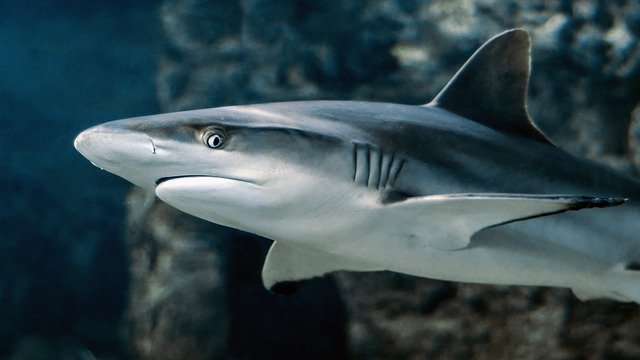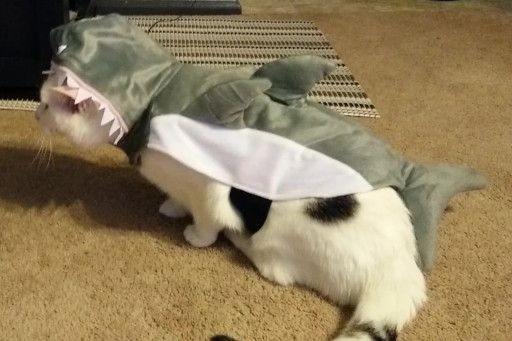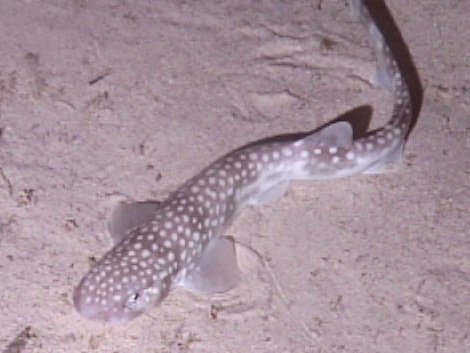You know what’s a terrible place to go during a global pandemic?
Florida.

On an unrelated note, I was recently having a conversation with a Floridian–we’ll call her Flo, to protect her privacy–and the subject of sharks came up.
I can’t remember exactly how the conversation went, since–for reasons I’ll get into momentarily–this damn post took a month to write, so I’m a little hazy on the details. For one reason or another, though, I pointed out that shark attacks are fairly uncommon.
Flo did not buy it.
So, as adults do, we brought in Google to resolve the dispute. And Professor Google declared that, for the past couple years, Florida has had between twenty and thirty shark attacks per year, or about one shark attack every few weeks.
And, if you’re seeing shark attacks on the news every couple of weeks (or seeing them every week or so for half the year?), that would definitely feel like an endless barrage of shark attacks.
It wouldn’t, however, change the fact that they’re still rare. With a population of 21 million,[1] the odds of any given individual winding up on the wrong end of a shark in a year are less than 0.00013%. Okay, fine, to be more fair, we should look at the coastal population of 15 million,[2] but that’s still less than 0.00018%.
Why No One Invites Me To Parties
This really wound up leaving us with a difference of opinion regarding what should constitute “rare,” but it did prompt me to waste a month on a new (read as “first”) dataviz project based on the data in the Global Shark Attack File, which, it turns out, is a thing.
If you play around with this, you may find a few rough spots, since I’ve never used Vega-Lite before, and this was perhaps an overly ambitious way of dipping my toe in the water. Which is why this process dragged on for a month.
I’ll note that I’m using the term “shark attack” for clarity because it’s a common phrase in pop culture, even though some prefer the terms “bite,” “incident,” “encounter,”[3] or “mouth hug.”
The chart is interactive, so you can zoom, pan, or filter by clicking on the charts. The gray areas on the map represent where no shark attacks have been reported, most likely because the authorities have all been eaten by sharks.
Note that the activity chart is a classification that I created by sorting through different listed activities such as “walking,” “swimming,” or “surfing.” The specific activities were a bit too varied, so I created some broader categories to encompass them, so “Watersports” would include things like surfing, waterskiing, kayaking, etc, and assigned these categories based on some regular expressions.
This isn’t a perfect method. The “doing stuff with sharks” category, for instance, includes anything that has the word “shark” in it. This can include things such as photographing sharks, filming sharks, and tagging sharks. And, of course, it rightly includes things like “harassing sharks,” “attempting to lasso a shark,” and “grabbing shark for a selfie.” A fascinating sidenote - not a single one of these incidents occurred in Florida. Additionally, none of them were fatal. For the human, I mean. Not necessarily for the shark. Which perhaps lends some credence to the idea that “shark attack” isn’t quite the term we should be using, and now I’m starting to feel bad about myself.
Where was I? Right, flaws in my approach. Since “doing stuff with sharks” includes any incident with “shark” in the column, it could also potentially include “getting attacked by sharks” and “blogging about sharks.” It would also include activities as “fell onto dead shark” which actually happened and kind of feels like it shouldn’t count. There is an “Invalid” category for the incident type, which seems like it would’ve fit this situation okay, but I guess technically there was a shark involved. But instead they labeled this one “Provoked.” Which…feels like a stretch. Some of the columns here were clearly populated with a freeform entry, and some must have involved a form with multiple checkboxes, and no option for “the shark was dead all along.”
Feel free to poke around with the visualization for a few minutes; I’ll wait.
…
Okay, that’s enough. You’ve had your fun, now let’s talk about what I’ve learned.
First off, there’s the fact that when it comes to dumb shark stories, Australia is at least as good as Florida. Seriously, who wants to lasso a shark?
What the Hell, Kentucky?
The next thing that caught my attention was Kentucky. I know, it’s not often that you think about Kentucky, but bear with me. You see, most of the shark attack hotspots on the map share a key characteristic: water.
Kentucky is landlocked.
I had questions.
The shark attack file listed the activity as “touching sharks,” which…well, no shit. If there’s no physical contact, it’s not much of an attack. The location said “Newport Aquarium.”
I had more questions.
The victim’s name said “12 people.”
I had literally all of the questions.
So I dug into the actual case file, such as it was. As it turns out, the “incident” was at one of those petting zoo-style exhibits, and was based on a (tiny) local news story about how sometimes people get minor bites from the catsharks, almost certainly because they roll onto their backs and the visitors make the mistake of rubbing their furry little bellies.[4] Regardless, the aquarium biologist indicated that the most severe of these attacks were akin to paper cuts, since “They are bristle-type teeth. It’s like a broom.”[5]

Since the report in the shark attack file was a bit light on details, I went directly to the news story. Trouble was, the website was gone, possibly because it was the sort of news station/paper (?) that thought kids getting paper cuts at a petting zoo qualified as “news.” After consulting The Wayback Machine, I found that the report was pretty much just a copy of the news story.
So I wound up unable to really resolve the question of whether this was the one time that twelve people were ever bitten at the exhibit, or if it was just the only time that anyone ever bothered to talk about it.
Either way, I was left with the suspicion that looking solely at the numbers from the shark attack file might leave the casual reader with an exaggerated idea of how many shark attacks that fall within the conventional idea of an “attack” are actually occurring.
Species
I was on the fence, but I eventually opted to include a chart for the species involved in a shark attack. Quickly, I noticed that three of the top four species were cop-outs that I used to show uncertainty:
- ? - Couldn’t parse it (usually because it’s blank, but also sometimes because it wasn’t meaningful)
- Unconfirmed attack - species field included some bullshit like “shark involvement not confirmed”
- Uncertain - the field included something like “unidentified” or “probably” or otherwise indicated that whoever was recording the entry thought someone was full of crap
The key takeaway here was that the “species” field in the spreadsheet was a garbage column and I shouldn’t have bothered. “A small shark” isn’t a fucking species, Greg (in my head the person’s name is Greg), and neither is “12’ shark” and neither is “unidentified species.” If you don’t know what the damn shark was, then leave the field blank and create a separate one for “size.”
Apart from that, the “white shark” is the most trigger-happy shark, followed by the “bull shark” and “tiger shark.” And yes, a white shark is the same as a great white shark, but scientists don’t like the term “great white”[6] because they actually kind of suck. Or something like that.
Weird Stuff
Another important lesson from the shark file is to not do weird shit with sharks.
Of course, most of the victims were simply minding their own business when the sea demons decided to nibble on them, but there were some incidents that seemed…odd.
Some of them I mentioned earlier.
The guy listed as “harassing sharks” thought it would be fun to chase sharks around with a jet ski, flanking it so it couldn’t get away.
The “lasso a shark” guy was ostensibly trying not to kill the shark, though he apparently took a picture with a dead shark afterward.
Multiple people got bitten holding baby sharks.
Do do do do do do.
And, above all the others: the guy who was “kissing the shark.” This was (is?) apparently a hobby of his. His takeaway: “Don’t kiss a nurse shark while it’s upside down.” An oddly specific lesson, in my opinion, but at least he learned something.
So Florida takes the win on weird shark stuff after all.
As an aside, there was also one confusing incident with a crocodile that I didn’t quite understand; I’ll say that getting attacked by a shark while catching (?) a crocodile seems like awful luck, though it’s not clear whether a shark was involved (or a crocodile, for that matter).
Either way, the details that I was able to discern made me sad. Apparently, reading about shark attacks is not necessarily as uplifting as you might expect; in fact, if you’re feeling down, perhaps the entire “animal maulings” genre is worth avoiding.
Conclusion
So, what are the most important things I’ve learned here?
- Don’t surf. Surfing is the recreational equivalent of walking into a shark store and saying, “Hey, what’s good for getting eaten by sharks? I’ll take two of that.” This applies to anything with “surfing” or “boarding” in the name, with the exception of snowboarding, which is mostly safe from sharks.
- Spending a month on shit like this is why I’m such a slow writer. Seriously, I could’ve spent this time working on my book.
- Notwithstanding point 1, sharks still aren’t a huge risk; even in Florida, the shark attack capital of the world, Floridians are for more likely to be killed by their own idiot governor. Seriously, what kind of moron tries to ban mask mandates?
- Oh, you thought a silly blog about sharks wouldn’t get political? Have you not met 2021?
Anyway, here’s what a catshark really looks like:

2 Australian States Say Their Sharks Will No Longer ‘Attack.’ They Will Only ‘Bite’ ↩︎
I know, this is a dumb joke, but admit it–it’s also adorable. ↩︎
